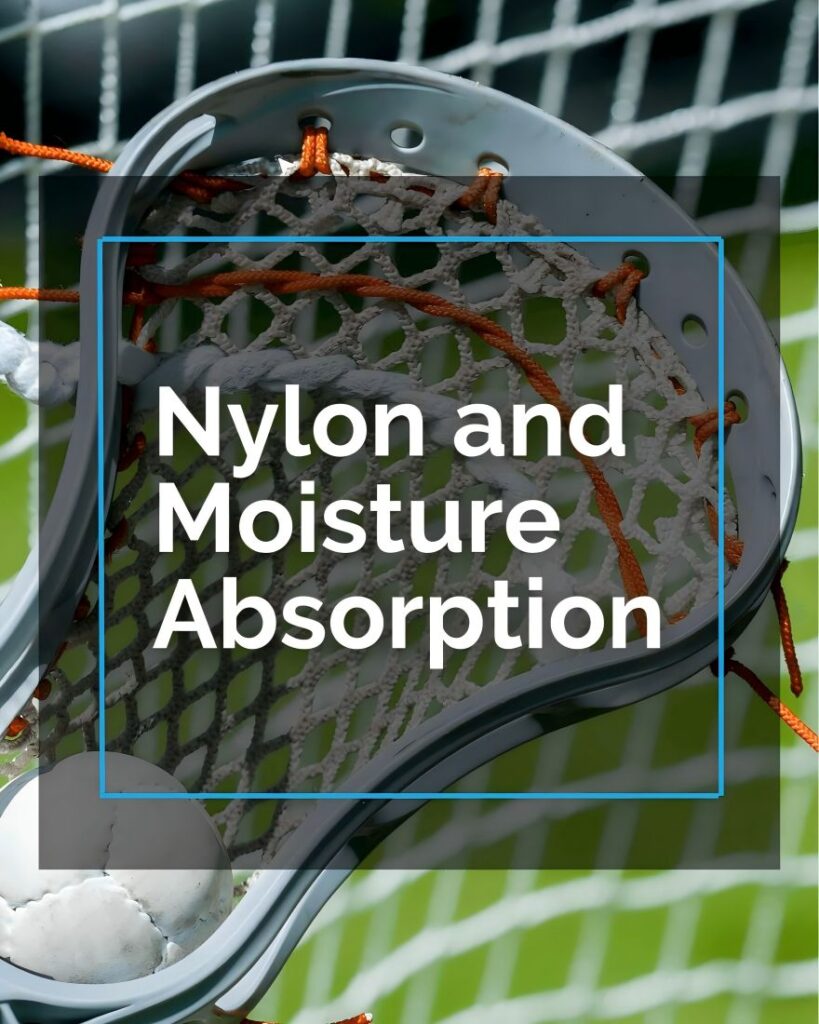Introduction of Nylon Structure & Water Absorption
When selecting textiles for various applications, understanding the absorption rates and structural properties of materials is crucial. Two widely used materials, nylon and cotton, have distinct characteristics that make them suitable for different purposes. This article explores the structural differences between nylon and cotton, comparing their water absorption properties to highlight their unique advantages.

Nylon: A Synthetic Polymer with Strength and Flexibility
Nylon is a synthetic polymer known for its versatility. It is composed of long chains of repeating monomers, linked through a process called polymerization. This structure provides nylon with strength, flexibility, and resistance to abrasion, making it ideal for products requiring durability, such as outdoor gear and industrial textiles.
Low Water Absorption: A Key Advantage of Nylon
One of nylon’s standout properties is its low water absorption rate. Due to its hydrophobic nature, nylon repels water, making it a popular choice for items like raincoats, umbrellas, and other moisture-resistant products. This characteristic ensures that nylon retains its strength and durability even when exposed to moisture.
Cotton: A Natural Fiber with High Absorption Rates
Cotton, on the other hand, is a natural fiber derived from the cotton plant. Its structure, made up of cellulose chains, creates a porous material capable of absorbing water quickly. This high water absorption rate makes cotton suitable for applications requiring moisture management, such as clothing and towels.
Cotton’s Moisture Management Benefits
Cotton’s ability to wick away moisture helps regulate body temperature, making it an excellent choice for clothing, especially in warm climates. This absorbency also makes it ideal for products like bathrobes and towels, where water retention is desired.
The Drawbacks of Cotton’s High Absorption
Despite its benefits, cotton’s high water absorption can also be a disadvantage. When wet, cotton can lose strength and become more prone to damage. This limits its suitability for applications that require high durability, especially in wet or humid conditions.
Comparing Durability and Breathability: Nylon vs. Cotton
Nylon’s low water absorption rate makes it more durable in wet environments compared to cotton. However, this also means nylon is less breathable, which can be uncomfortable in hot and humid conditions. In contrast, cotton’s breathability makes it a better choice for clothing, though its lower durability when wet limits its use in certain areas.
Conclusion of Nylon Structure & Water Absorption
In conclusion, nylon structure and cotton each offer unique properties that suit different applications. Nylon’s low water absorption and durable structure make it perfect for moisture-resistant and long-lasting products, while cotton’s high absorption and breathability make it ideal for moisture management. By understanding these differences, manufacturers can choose the best material for their specific needs, ensuring functionality and comfort in their products.
Nylon vs. Cotton: Water Absorption and Structure – FAQ Summary
- What are the main differences between nylon structure and cotton structure?
- Nylon structure is a synthetic polymer made of long chains of monomers through polymerization, providing it with strength and flexibility. Cotton, a natural fiber, consists of cellulose chains that form a porous structure, making it absorbent.
- How does nylon structure impact its water absorption?
- Nylon’s hydrophobic nature means it absorbs very little water, making it suitable for moisture-resistant products like raincoats and outdoor gear.
- Why is cotton highly absorbent?
- Cotton’s porous structure, created by intertwined cellulose chains, allows it to absorb water readily, which is useful for products that require moisture management, such as towels and clothing.
- What are the advantages of nylon’s low water absorption?
- Nylon’s low water absorption makes it durable and resistant to damage from moisture, ideal for items exposed to wet conditions.
- What are the benefits of cotton’s high water absorption?
- Cotton can wick away moisture from the body, aiding in temperature regulation, which makes it ideal for clothing in warm climates.
- What are the drawbacks of cotton’s high water absorption?
- When wet, cotton can lose strength and become more vulnerable to damage, limiting its use in high-durability applications.
- How do nylon and cotton compare in breathability?
- Cotton is more breathable than nylon, which can make nylon uncomfortable for clothing in hot, humid environments, though it excels in durability.
- Which material is better for moisture-resistant applications?
- Nylon is better suited for moisture-resistant applications due to its low water absorption and durability.
- Which material is better for moisture management?
- Cotton is better for moisture management and breathability, making it ideal for clothing and towels.
- How do manufacturers choose between nylon and cotton?
- Manufacturers select nylon for moisture resistance and durability and cotton for breathability and moisture absorption, depending on the product’s intended use.
